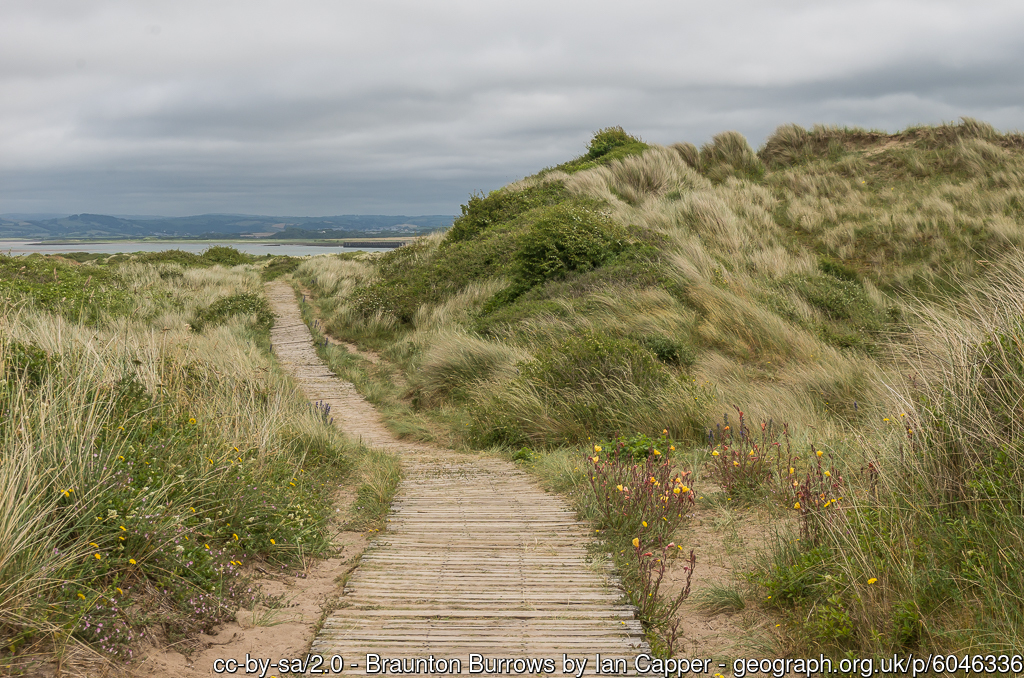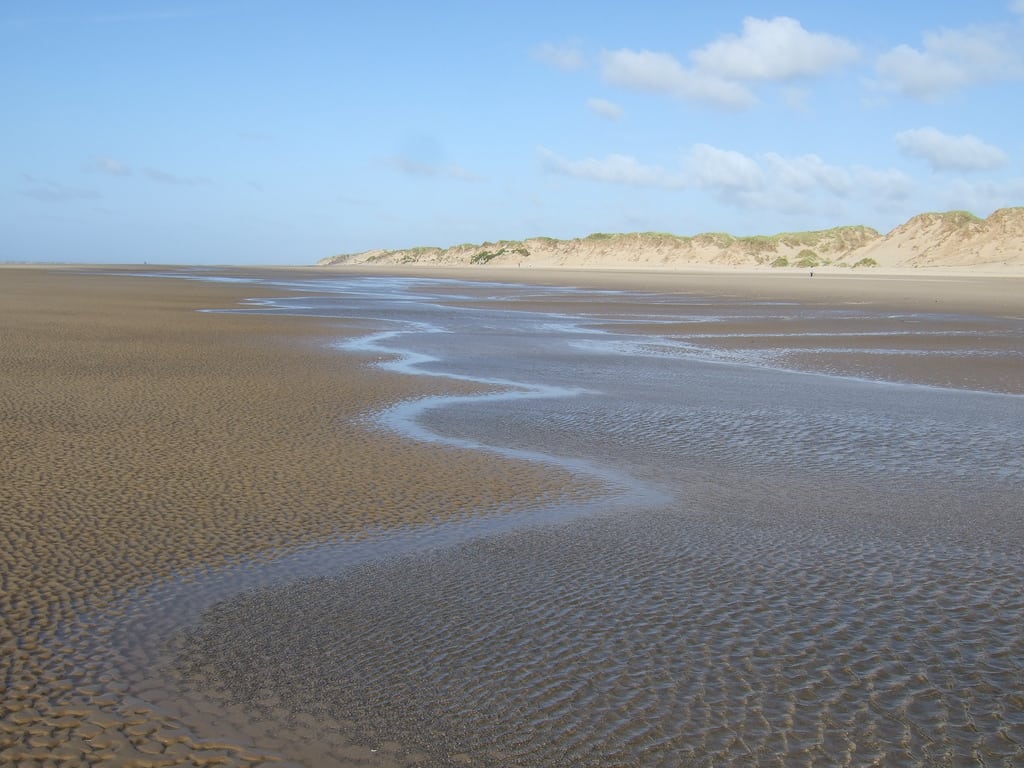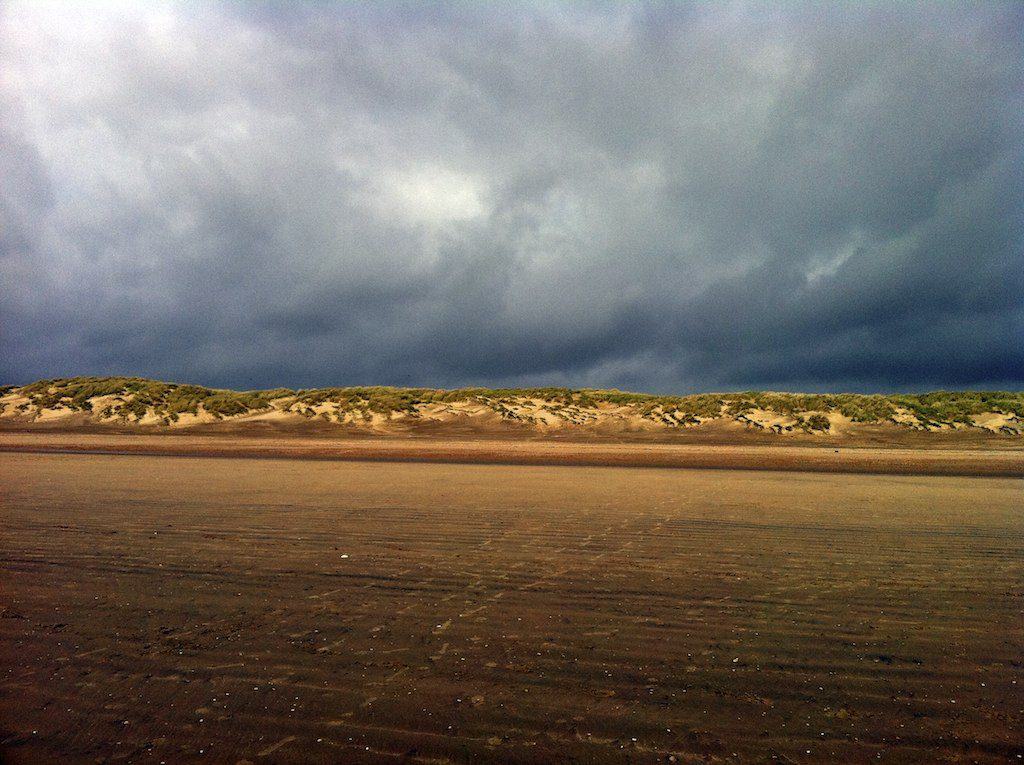Sand dunes are very special places and vital to our coastline. They vary in size, shape, and structure and play an important ecological role. Sand dunes can be used for various activities, including amenity, recreation, commercial and community use, coast defence, habitat and earth science functions. These uses have social, environmental and economic value, which must be balanced as ambitions in one area may put more pressure on another.
Here are some key characteristics of sand dunes:
- Formation: Sand dunes form when wind or water transports sand particles and deposits them in a particular area. Wind-blown sand dunes are common in coastal regions, while water-formed dunes may be found along coastlines or in river and lake environments.
- Components: The primary component of sand dunes is, of course, sand. The sand particles’ size and composition can influence the dunes’ shape and stability. Vegetation, such as grasses and shrubs, may also play a role in stabilizing dunes by preventing erosion.
- Ecosystem: Sand dunes play important roles in local ecosystems. They provide habitats for specialized plant and animal species adapted to the unique conditions of dune environments. Dunes also act as natural barriers, protecting inland areas from storm surges and wind erosion.
- Stabilization and Disturbance: While vegetation helps stabilize some dunes, others may be more mobile and subject to shifting. Human activities, such as construction or recreation, can disturb dune ecosystems and lead to erosion.
- Change: Dunes are constantly changing and often involve sand being eroded from the front of dunes during storms and then typically returning to the beach and dunes in quieter periods between storms.
- Conservation and Management: Due to their ecological significance and vulnerability to disturbance, many sand dune systems are subject to conservation and management efforts. These may include controlling human access, promoting vegetation growth, and preventing erosion.
The UK has several stunning sand dune systems offering unique landscapes and ecosystems. Here we have listed some of our favourite sand dunes to visit in the UK:

Ainsdale Sand Dunes, Merseyside: Located near Liverpool, Ainsdale Sand Dunes are part of the Sefton Coast and are known for their extensive dune system. The area is a designated National Nature Reserve home to various plant and animal species. Visitors can enjoy walking trails through the dunes and appreciate the coastal biodiversity.

Braunton Burrows, North Devon: Situated near the village of Braunton, Braunton Burrows is one of England’s largest sand dune systems. It forms part of the North Devon Biosphere Reserve and is home to diverse flora and fauna. The dunes are adjacent to Saunton Sands, a popular beach, making it a great destination for nature lovers and beachgoers.

Formby Sand Dunes, Merseyside: Managed by the National Trust, Formby offers a picturesque stretch of coastline with extensive sand dunes and pine woodlands. The dunes are known for their red squirrel population, and visitors can explore walking paths with panoramic views of the Irish Sea.

Porthkidney Sands, Cornwall: Porthkidney Sands, located in St. Ives on the north coast of Cornwall, features a stunning beach with large, picturesque sand dunes. The dunes provide a backdrop to the sandy shores and is not as busy as the St Ives town beaches, popular with dog owners as it is dog-friendly all year round.

Camber Sands, East Sussex: This expansive sandy beach near Rye in East Sussex is known for its extensive sand dunes and is one of the few non-pebble beaches in the region. Camber Sands is popular for beach activities, and its dunes provide a scenic setting for walks and exploration.

Ynyslas Dunes, Ceredigion, Wales: Situated at the mouth of the River Dyfi in Wales, Ynyslas Dunes offer a unique combination of sand dunes, salt marshes, and a beach. The dunes are part of the Dyfi National Nature Reserve and provide a habitat for various wildlife.
When visiting these natural areas, it’s important to follow conservation guidelines to protect the delicate ecosystems of the sand dunes. Additionally, check for the latest information on access and facilities to ensure a safe and enjoyable visit. We as visitors must go the extra mile to be aware of our surroundings and protect them when we visit, and here we discuss some key points to remember on any visit.
- To best enjoy the wildlife, you need to be quiet and considerate to have a better chance of seeing interesting birds and animals.
- Keep to the network of paths or boardwalks to avoid disturbing ground-nesting birds.
- Many sand dune areas are local nature reserves or designated Sites of Special Scientific Interest (SSSI). These have extra protection and often local restrictions, which you should read on the information boards before entering.
- Protect the Marram grass; if walked over, it can be damaged very quickly, and this is the main plant for keeping the sand in place during wind and storms. Without the grass, the dunes will be eroded.
- Be a responsible dog owner by cleaning up after your dog and keeping on a lead near nesting wildlife.
- Keep the area clean by binning or taking home all your litter.
- Fires and BBQs should never be used in the dunes as they kill the vegetation and pose a risk to wildlife.
- Camping can damage the dune system, and you should only camp in designated areas.
If you have a favourite UK sand dune system, why not share a picture on our social channels Facebook, X (Twitter) or Instagram.
